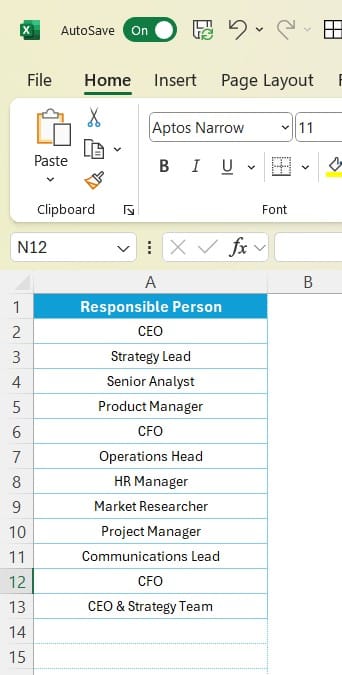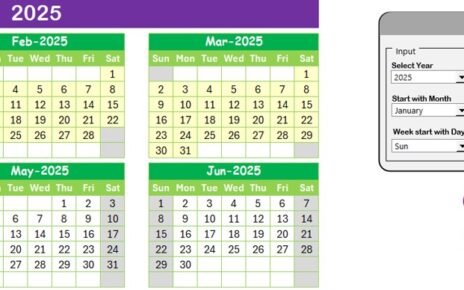In today’s fast-paced business environment, efficiency and productivity are crucial for success. Workflow automation is a powerful tool that helps organizations streamline operations, reduce errors, and save valuable time. One of the best ways to ensure a smooth transition to automation is by using a comprehensive Workflow Automation Checklist.
This checklist serves as a roadmap for implementing automation successfully, ensuring that every task is carefully executed. Whether you’re just starting or improving your existing processes, a checklist can be the key to maximizing the benefits of automation.
In this article, we will explore everything you need to know about creating and using a workflow automation checklist. We’ll cover its key features, advantages, best practices, and much more. So, let’s dive in!
What Is a Workflow Automation Checklist?
A Workflow Automation Checklist is a structured document or template that outlines every step in the automation process. It ensures that all critical tasks and milestones are completed and tracked efficiently. This checklist can be used by businesses of any size and industry, helping teams manage the entire automation journey — from planning to execution and optimization.
By following a well-organized checklist, teams can avoid missing key steps, reduce the risk of errors, and ensure that the automation system is working as intended.
Click to buy Workflow Automation
Key Features of the Workflow Automation Checklist Template
In our Workflow Automation Checklist Template, we’ve created a ready-to-use framework to help teams implement automation systems effectively. Here’s a look at the key features:
Two Worksheets for Easy Organization
The template includes two sheets:
- Workflow Automation Checklist: This is the primary sheet where you’ll capture the checklist information.
- List Sheet Tab: This sheet helps manage and organize the responsible persons in the workflow by creating a drop-down list in the main table.

Click to buy Workflow Automation
Top Section Overview
The top section of the template includes three important cards for tracking the overall progress of the automation:
- Total Count: Displays the total number of tasks in the checklist.
- Checked Count: Shows how many tasks have been marked as completed.
- Crossed Count: Displays tasks marked as completed but perhaps needing further review or adjustments.
- Progress Bar: Provides a visual representation of the percentage of completed tasks, giving a quick overview of the overall progress.
Checklist Table
This is the heart of the template, where each step of the workflow automation process is tracked. The table includes the following columns:
- Serial No.: A simple index for each task.
- Checklist Item: A brief description of the task to be completed.
- Description: Detailed information about the task.
- Responsible Person: The individual accountable for completing the task.
- Deadline: The due date for each task.
- Remarks: Additional notes or instructions for clarity.
- Status: A column to mark each task as complete (✔) or incomplete (✘).
The checklist template offers a structured way to capture, track, and update the status of each step in the automation process, ensuring that nothing is overlooked.

Click to buy Workflow Automation
Advantages of Using a Workflow Automation Checklist
Using a Workflow Automation Checklist can bring several benefits to your business, helping you ensure smooth, effective implementation. Here are some of the key advantages:
- Streamlined Process Management: A checklist allows you to break down the complex task of automation into manageable steps. By focusing on one task at a time, teams can tackle each step with precision and confidence.
- Increased Accountability: By clearly assigning responsible persons for each task, the checklist promotes accountability. Everyone knows their roles, making it easier to track progress and hold individuals responsible for meeting deadlines.
- Clear Visibility into Progress: With progress tracking tools like the “Total Count,” “Checked Count,” and “Progress Bar,” the checklist provides a clear view of the overall status of the project. This makes it easier to identify areas that need attention or tasks that might be falling behind.
- Reduced Risk of Mistakes: Automation can be complex, and small errors can lead to significant problems. Using a checklist ensures that each step is completed thoroughly and correctly, minimizing the risk of mistakes and system failures.
- Time and Cost Savings: By following an organized checklist, teams can complete tasks more efficiently. This reduces the time spent on rework, ensures smoother implementation, and ultimately saves money on operational costs.
- Easy Collaboration: A shared checklist template enables better collaboration between team members. Since all information is centralized and updated in real-time, it’s easier for teams to stay aligned and work together toward the common goal.
Opportunity for Improvement in Workflow Automation
Although workflow automation provides numerous benefits, there is always room for improvement. Here are some key opportunities to optimize your automation efforts:
- Integrating Advanced AI and Machine Learning: One area for improvement is the integration of AI and machine learning into automation. These technologies can help automate decision-making processes and predict future outcomes, enhancing the efficiency of your workflows.
- Continuous Monitoring and Adjustment: Even after automation is implemented, continuous monitoring is essential. Regularly reviewing the performance of the automation system allows you to make data-driven adjustments, improving efficiency and reducing errors over time.
- Scaling Automation Across Teams and Departments: Another opportunity for improvement is scaling automation across multiple departments. Once a workflow is automated in one team, expanding it to other areas can maximize the benefits and streamline operations across the organization.
- User Training and Support: Investing in thorough training for employees who interact with the automation system is vital. A well-trained team will be able to use the system more effectively, reducing errors and increasing the adoption rate across the company.
Best Practices for Implementing Workflow Automation
To ensure the success of your workflow automation initiatives, consider these best practices:
- Set Clear Objectives: Before beginning any automation project, clearly define your goals. What do you want to achieve with automation? Whether it’s reducing manual tasks, improving accuracy, or speeding up processes, having a clear objective will guide the entire implementation process.
- Start Small and Scale Gradually: It’s tempting to automate everything at once, but that can overwhelm your team and lead to mistakes. Start with one process, test it, and scale gradually. This will allow you to fine-tune the automation system and make adjustments as needed before expanding.
- Choose the Right Tools: Selecting the appropriate automation tools is essential for success. Ensure that the tools you choose integrate well with your existing systems and are capable of handling the tasks you intend to automate.
- Test, Test, Test: Before going live, conduct extensive testing of the automated processes. This includes testing for edge cases, system compatibility, and user experience. Ensure that the automation works seamlessly across all scenarios.
- Involve Key Stakeholders: Involving key stakeholders early in the process ensures that the automation system meets the needs of all departments. Regular feedback from end-users will help refine the system and identify areas for improvement.
- Document Everything: Comprehensive documentation is crucial for troubleshooting, scaling, and optimizing the automation system. Document every process, script, and integration point to ensure long-term success.
Conclusion
A Workflow Automation Checklist is an indispensable tool for businesses looking to streamline their processes and improve efficiency. By using a structured checklist, organizations can ensure that they complete each step of the automation process thoroughly, reduce the risk of errors, and achieve their automation goals.
Whether you’re new to automation or looking to refine your existing system, following a well-organized checklist will help you stay on track and optimize your workflow.
Frequently Asked Questions (FAQs)
- What is the purpose of a workflow automation checklist?
The purpose of a workflow automation checklist is to provide a structured framework that guides teams through each step of the automation process, ensuring that no task is overlooked and that everything is completed on time and correctly.
- How can I customize my workflow automation checklist?
You can customize your workflow automation checklist by adjusting the tasks, deadlines, responsible persons, and other details to suit your specific business needs. The checklist is flexible and can be tailored to any workflow.
- What are the most common mistakes in workflow automation?
Common mistakes include failing to define clear objectives, not thoroughly testing automation before deployment, and choosing the wrong tools or platforms for automation. It’s crucial to follow best practices and involve key stakeholders to avoid these pitfalls.
- How can I improve my workflow automation process?
You can improve your workflow automation process by regularly reviewing performance, scaling automation to other departments, integrating advanced technologies like AI, and providing adequate training and support for your team.
- What tools are best for workflow automation?
The best tools for workflow automation depend on your specific needs, but popular options include Zapier, Microsoft Power Automate, and UiPath. It’s important to select tools that integrate well with your existing systems and meet your workflow requirements.
Visit our YouTube channel to learn step-by-step video tutorials



